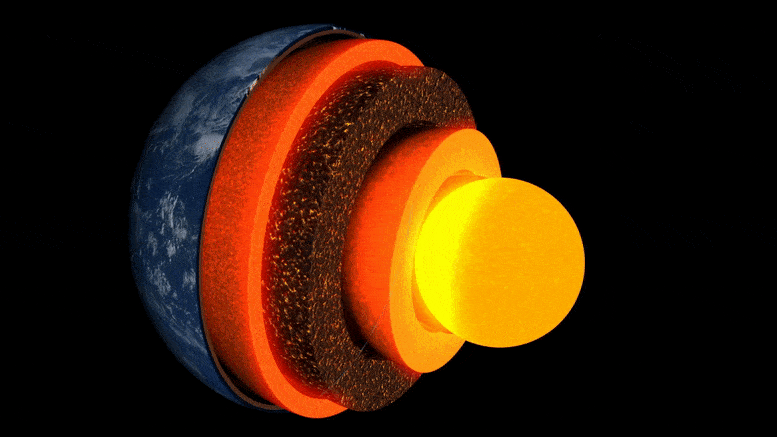Our planet Earth had been effaced by many celestial bodies but the ninth largest meteorite named El Ali surprised us more than usual by the fact that it has brought two new minerals unknown to this planet.
The peculiar design and composition that could be found and ascertained in Somalia only in 2020, was suggestive of a discrete touch by the unseen tracts of Universe.
It has been truly said that the Rocks & Minerals are the oldest storytellers.
While these stories may take their time to be told, it says a lot about the time and processes of the planet and era they are from.
The planet’s tectonic plates and the underlaid mantle have always been moving in response to the Earth’s spin, with its pattern mostly unknown and incomprehensible.
Only a billion years’ study can help trace something.
For instance, paleomagnetism that engages with the study in rocks to understand evolution of Earth, is an important source to understand and record the Earth’s magnetic field alongside the way this heat inside is carried everywhere using a process called convection.
And so have greater researches crowded in this arena.
Minerals inside the Earth Now: What’s new?
Minerals are found almost everywhere on its crust which has about 95 percent igneous rocks, metamorphic, shale rocks that comprises oxygen, aluminium, iron, silicon, aluminum making up nearly 88 percent of the Earth’s crust while the remaining 11.9 percent is composed of other minor elements.
The upper mantle and the crust act together as an entity called the lithosphere. The upper mantle is also composed of plastic-like fluid called asthenosphere that contains magma, hot iron, silica, magnesium and oxygen.
The lower mantle is made up of the same material as the upper mantle but is solid largely of magnesium silicate called bridgmanite and in smaller traces of magnesium oxide called periclase.
As per a new study published in journal Nature, the minerals churning nearly 650 kms under the surface are behaving in ways just the opposite of what was expected so far.
Visualizing the Composition of the Earth’s Crust from Visual Capitalist on Vimeo.
The Researcher explains why there is an uncertainty with what goes on inside the Earth: “These processes are so slow they seem imperceptible to us. But the flow in the lower mantle communicates with everything it touches; it’s a deep engine that affects plate tectonics and may control volcanic activity.”
The problem is that this scenario cannot be simulated on computer systems and illuminate what goes inside the Earth, at an instant, as pressure goes beyond 135 gigapascals and the temperatures exceeds thousands of degrees F.
While a string of controlled laboratory experiments was enough to previously infer that periclase deforms more easily than bridgmanite.
However, the new study explained how minerals could behave differently, that too on a timescale of millions of years. Integrating this timeline with computational expertise during the study, it was found that periclase has greater strength than abundantly found bridgmanite inside the Earth.
To model this process, a tool called Diffusion Data (DD) simulation is used, showcasing collective motions and interactions because of dislocations at very large ‘mesoscale’ i.e., ten to hundreds of kilometers.
This technique has its basis in continuum elasticity theory, that describes the elastic field arising out of dislocations in any crystal.
Now why does this happen?
Because of slow diffusion of oxygen inside the periclase in the presence of extreme pressure and hence, it hardly participates in the structural deformation inside the Earth, leaving it for the bridgmanite to dictate deformation in the lower mantle.
This inversion of behavior concluded from inside the Earth at unthinkable temperatures and pressures has solved the mysteries and broken the common intuition on top of it i.e., silicates are stronger than oxides.
Another recent study published in the journal Nature has pointed out how the Earth’s inner core (that rotates separately because of its solid constituents) is slowing down to spin, may completely stop and even may reverse its direction.
Although a few Scientists differ in its cause, actuality and effects but understanding of Earth’s deepest corners can help acknowledge any incoming surprise.
The planet has an answer for all its queries. For every problem there is a definite solution, only if we dare to look.

